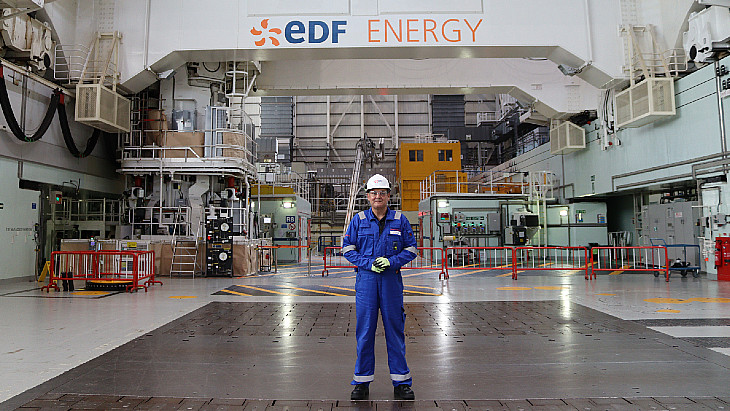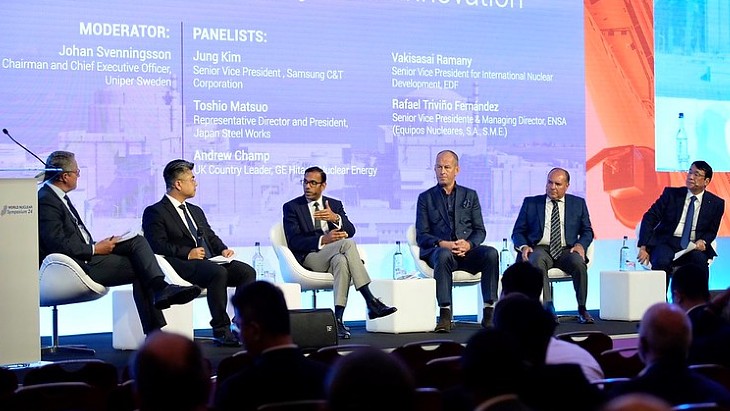Changes to UK nuclear liability regime
With the return of nuclear new build in the UK, the potential to be liable for nuclear damage will be of vital importance to all parties in the nuclear supply chain as well as investors and funders of new nuclear projects, writes Darren Walsh.
The Nuclear Installations (Liability For Damage) Order 2016 (2016 Order) was made on 4 May 2016 and is expected to become law early this year. In two Protocols dated 12 February 2004, the contracting parties to the Paris Convention and Brussels Convention agreed a number of significant changes to the regime on nuclear third party liability. The 2016 Order implements the Protocols from 2004 in the UK. In the event of a nuclear incident an increased amount of compensation will be available, in respect of a broader range of damage, to a wider category of claimants.
As a number of the new nuclear reactors in the UK will be built adjacent to existing nuclear licensed sites, the 2016 Order seeks to clarify the interaction of potential liability between new build nuclear sites and legacy nuclear sites.
The key changes made pursuant to the 2016 Order can be summarised as follows:
• Increase in the maximum amount of compensation payable from £140 million to €1.2 billion for operators of standard installations.
The operator's liability will be extended to include three new categories of damage: reinstatement of impaired environment; loss of income derived from the environment; and cost of preventative measures presented by an actual or a "grave or imminent threat" of a nuclear incident.
• Addresses uncertainty around the interaction between new nuclear build sites and legacy nuclear sites - no new occurrence will arise if the nuclear site licensee of the new build site disturbs a previous discharge by a legacy nuclear site.
• Changes to the length of time claimants have to claim - 30 years for death and personal injury and 10 years for all other claims.
• Wider category of potential claimants - including those suffering damage in non-nuclear non-convention states or in nuclear states which are not a party to the Paris Convention but have equivalent and reciprocal liability arrangements.
These changes are similar to those already in place under the Vienna Convention regime.
Implications
Operators are required to maintain insurance or other financial security to cover potential nuclear liability to third parties under the Paris Convention. Operators must increase their existing form of security to cover this additional level and scope of liability. The increased level of liability will make operators' insurance obligations more onerous and more expensive.
The UK government has acknowledged that in the short term it may be difficult for operators to obtain insurance to cover the full extent of their increased liability under the new regime. In particular coverage may not be readily available for the extended 30 year personal injury claims limitation period. The 2016 Order empowers the UK government to provide insurance cover on commercial terms in order to step in and fill the gap if the insurance market is unable to meet this demand.
Suppliers of goods and services to nuclear operators should check whether their exposure under existing contracts is affected by the new regime and whether the indemnities contained in those contracts still afford them adequate protection. For example, the existing indemnity provisions may indemnify contractors against third party claims arising from a nuclear incident, but only in relation to the lower liability cap and narrower scope of the previous regime.
Although the 2016 Order extends the geographical scope of the Paris Convention, there remains a risk in respect of claims brought by claimants who are domiciled in non-convention states, but who suffer damage as a result of a nuclear incident in the UK bringing claims in their home country courts. For example, a claimant in Ireland (Eire) who suffers damage from a nuclear incident occurring in the UK could bring a claim in the English courts under the Paris Convention regime. That claimant would also be able to make a non-convention claim in the Irish courts, which would not be subject to the restrictions and caps of the regime (though this may also pose enforceability issues in the English courts). Claims could be brought against parties other than the operator (eg. contractors working on UK nuclear sites) as the strict channelling of liability principles will not apply to non-convention claims.
Interaction between sites
The government sees nuclear energy as a fundamental element of the UK’s transition to a low carbon economy. The UK currently has a number of reactors which generate the baseload of the UK’s electricity. All but one of these reactors is scheduled to be retired by 2030 and the government is therefore supporting the building of a new fleet of nuclear power stations in the UK.
Many of the new nuclear power stations which are planned to be built in the UK will be built adjacent to an existing nuclear licensed site. There is potential for activity on the new nuclear site to disturb or interfere with radioactive materials previously discharged by the neighbouring legacy nuclear site.
The 2016 Order seeks to clarify the interaction of potential liability between new build nuclear sites and legacy nuclear sites. Under the 2016 Order, the mere presence of nuclear matter in a place as a result of a previous occurrence is not to be treated as a separate "occurrence".
No new occurrence would therefore arise in relation to nuclear matter previously released from a legacy nuclear site, which is subsequently disturbed and moved to a new place. The 2016 Order inserts a new section 26(2A) into the Nuclear Installations Act 1965 which provides: "if nuclear matter is in a place at a particular time as a consequence of an occurrence falling within section 7(1B) ... neither the presence of the matter in that place at that time nor any effect that the matter produces at that time is to be treated as a separate occurrence falling within any of those provisions".
The government's intended effect of this new section is to:
• reverse the position under Magnohard Limited v UKAEA [2004], which took an expansive view of the meaning of "occurrence" and said that an occurrence took place every time nuclear matter that had been discharged on a previous occasion was disturbed and moved to a new place. The government's view is that "occurrence" should not be so broadly construed; and
• as no new 'occurrence' arises, the time limits for bringing a claim under the NIA are not reset and instead attach to the original occurrence.
The purpose of the government's proposed amendment is to tie the presence of previously released nuclear matter to the original release. There is a single "occurrence", being the original release and liability would still attach to the operator of the legacy nuclear site. No new occurrence will therefore arise if the nuclear site licensee of a new build site disturbs a previous discharge from a legacy nuclear site.
With the changes proposed by the 2016 Order, developers, suppliers and funders associated with new nuclear build should educate themselves on the application of this imminent new regime.
Darren Walsh
Comments? Send them to editor@world-nuclear-news.org
Darren Walsh is a partner at global law firm DLA Piper Energy sector. He leads the firm's energy team in the North West of England.










